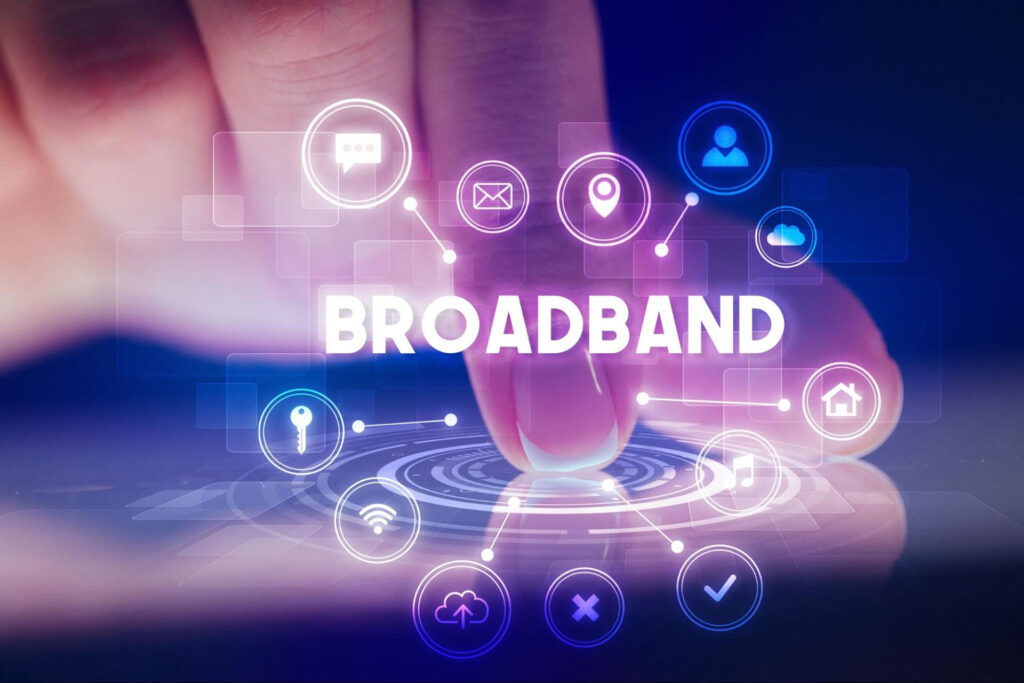In the vast landscape of digital connectivity, the term “broadband internet” is ubiquitous, often casually thrown around in conversations about online activities and streaming services. But what exactly is broadband internet, and why is it such a pivotal player in the realm of modern communication? We hope to explain the intricacies of this technology that has become an indispensable part of our daily lives.
Defining Broadband: Beyond the Basics
At its core, broadband refers to a high-capacity transmission of data that allows for the simultaneous sending and receiving of information at a swift pace. Unlike traditional narrowband connections, which are limited in their data transfer rates, broadband offers significantly greater bandwidth, enabling users to transmit large volumes of data seamlessly.
The term “broadband” encompasses various technologies and services, such as Digital Subscriber Line (DSL), cable, fiber-optic, satellite, and wireless connections. Each technology has its unique characteristics and advantages, but they all share a common goal: to provide users with faster and more reliable internet access.
Speed Matters: The Need for Broadband
One of the defining features of broadband internet is its high-speed capabilities. Speed, in this context, refers to the rate at which data is transmitted over the network, typically measured in megabits per second (Mbps) or gigabits per second (Gbps). Broadband connections offer significantly higher speeds compared to traditional dial-up connections, allowing users to access and share information, stream videos, play online games, and engage in other bandwidth-intensive activities without the frustrating delays of slower connections.
The importance of high-speed internet cannot be overstated in today’s digitally driven world. From video conferencing and online collaboration to streaming high-definition content and virtual reality experiences, broadband enables a seamless and immersive online experience. The increased speed also enhances the efficiency of everyday tasks, making the internet an indispensable tool for work, education, and entertainment.
Diverse Technologies, Common Goal
Broadband internet is not a one-size-fits-all solution. Instead, it encompasses a variety of technologies that cater to different needs and geographic locations.
DSL, which utilizes existing telephone lines, is a popular choice for areas where other options may be limited. Cable broadband, delivered through cable television infrastructure, is widely available in urban and suburban areas. Fiber-optic broadband, known for its high-speed capabilities, uses thin strands of glass to transmit data as pulses of light, providing unparalleled performance.
Satellite broadband extends internet access to remote and rural locations by beaming signals from satellites in orbit. Wireless broadband, facilitated by technologies like Wi-Fi and mobile networks, delivers internet access without the need for physical cables, fostering mobility and convenience.
Each technology has its strengths and weaknesses, influenced by factors such as infrastructure, geographical considerations, and the level of investment in a particular region.
Broadband Impact: Beyond Connectivity
The advent of broadband internet has transformed the way we live, work, and communicate. The accessibility of high-speed internet has fueled the growth of the digital economy, allowing businesses to reach global markets, entrepreneurs to innovate, and individuals to acquire new skills through online education.
In the realm of healthcare, broadband facilitates telemedicine, enabling remote consultations and diagnostics. In education, it opens up opportunities for online learning, connecting students and educators across the globe. The cultural landscape has also been reshaped, with streaming services revolutionizing how we consume music, movies, and television.
Challenges and Future Prospects
While broadband internet has undoubtedly revolutionized connectivity, challenges persist. Disparities in access, often referred to as the “digital divide,” highlight the need for expanded infrastructure and increased affordability in underserved regions. Governments, private enterprises, and communities are actively working to bridge this gap and ensure that the benefits of broadband reach everyone.
Looking ahead, the evolution of broadband continues with the development of next-generation technologies. The deployment of 5G networks promises even faster speeds and lower latency, paving the way for innovations like the Internet of Things (IoT) and smart cities. As technology advances, the importance of broadband in shaping the future of communication, collaboration, and innovation becomes increasingly apparent.

Invest in Broadband Internet Today
Broadband internet is more than just a buzzword; it’s a technological marvel that underpins the interconnected world we live in today. From its diverse range of technologies to its transformative impact on various aspects of our lives, broadband has become an essential enabler of progress and connectivity. As we navigate the ever-evolving landscape of digital communication, understanding the nuances of broadband becomes crucial for making informed decisions and harnessing the full potential of internet service providers.
Check out our SmarterHome.ai blog to learn more about internet, TV, mobile, and home security services from one of our kiosks near you.


